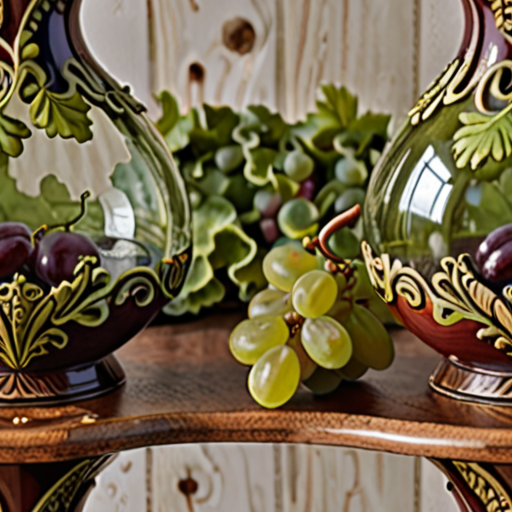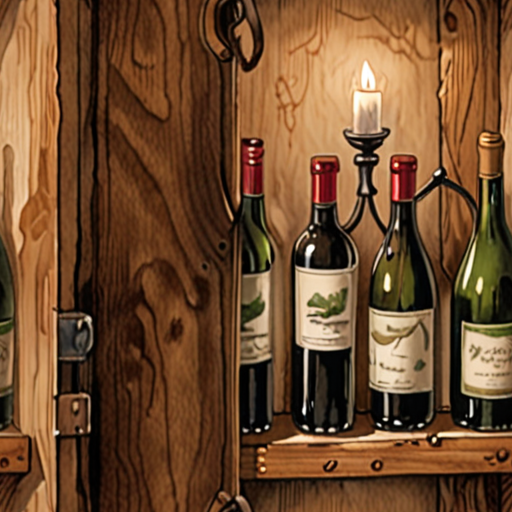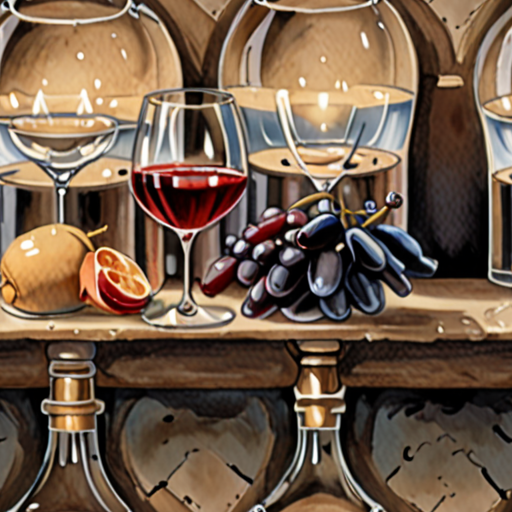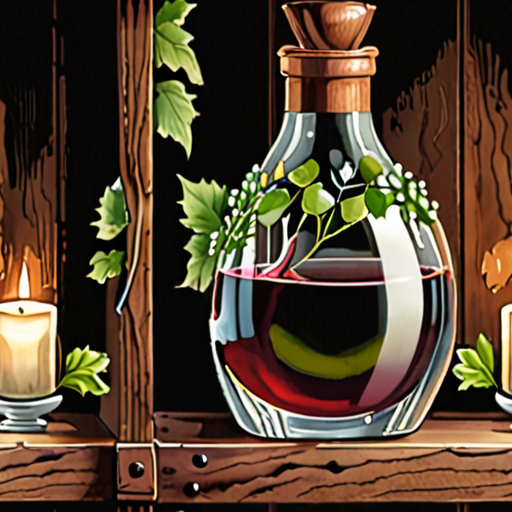When it comes to elevating your wine-drinking experience, few accessories can make as significant an impact as a high-quality wine decanter. Whether you’re a seasoned oenophile or just starting to explore the world of fine wines, choosing the perfect wine decanter can seem like a daunting task, especially with the numerous options available on the market.
The right wine decanter can enhance the flavors and aromas of your favorite wines, while also adding a touch of elegance to your dining table. However, with so many factors to consider, from materials and sizes to types and luxury options, it’s easy to get overwhelmed.
In this comprehensive guide, we’ll walk you through the essential considerations for selecting the perfect wine decanter for every occasion, covering topics such as the best materials, ideal sizes, and types of wine decanters available. We’ll also delve into the art of decanting, exploring how long wine should sit in a decanter, which wines benefit from decanting, and what wines are best left undecanted.
Whether you’re looking to upgrade your wine-drinking experience or simply want to learn more about the world of wine, our expert advice and insider knowledge will help you navigate the complex world of wine decanters and make informed decisions about your next wine purchase.
From the benefits of using a RIEDEL wine decanter to the potential risks of over-decanting, we’ll cover everything you need to know to become a wine connoisseur. So why wait? Dive into the world of wine decanters and discover the secrets to unlocking the full potential of your favorite wines.

Choosing the Right Wine Decanter
When it comes to selecting the perfect wine decanter, there are several factors to consider.
- Aeration Time: Different wines benefit from varying levels of aeration. Young red wines with robust tannins may require more aeration time, while delicate white wines might need less.
- Decanter Shape: Choose a decanter with a shape that complements the characteristics of the wine you intend to serve. A Bordeaux-style decanter, for instance, is ideal for full-bodied red wines, whereas a Burgundy-style decanter suits lighter-bodied reds.
- Material: Wine decanters can be made from various materials, including glass, crystal, and ceramic. Glass decanters are popular due to their transparency and ability to showcase the wine’s color and viscosity.
- Size: Select a decanter that fits comfortably in your hand, allowing for easy pouring and serving. A standard decanter size ranges from 500ml to 750ml.
- Neck Width: A narrower neck allows for better aeration, while a wider neck facilitates easier pouring.
- Handle: Consider a decanter with a comfortable handle for effortless pouring and serving.
- Brand Reputation: Research reputable wine decanter manufacturers, such as Riedel, Spiegelau, and Zalto, known for producing high-quality products.
- Price Point: Set a budget and balance it with the quality and features you desire in a wine decanter.
At Fine Vines, we recommend exploring our collection of premium wine decanters, crafted to enhance the wine-drinking experience.
For a more in-depth understanding of wine decanters, visit our Wine Decanters page, where you’ll find expert advice and product recommendations.
Additionally, check out our Wine Tasting Guides for valuable insights into wine appreciation and pairing techniques.
Remember, the right wine decanter can elevate your wine-drinking experience, making every sip a delight.
Decanting Wine: How Long Should It Sit?
The ideal decanting time for wine largely depends on several factors, including the type of grape variety, the age of the bottle, and the shape of the decanting vessel.
- Light Red Wines: For light-bodied red wines like Pinot Noir, a decanting time of 30 minutes to 1 hour is sufficient.
- Full-Bodied Reds: More robust, full-bodied reds like Nebbiolo or Syrah may require an hour or more to fully open up.
When it comes to white wines, the decanting time can vary depending on the style and age of the wine. Generally, crisp and refreshing whites like Sauvignon Blanc or Pinot Grigio can benefit from a shorter decanting time of 15-30 minutes, while richer and oaked whites like Chardonnay may require 1-2 hours.
It’s worth noting that the shape of the decanting vessel can also impact the decanting time. A wider-bowled decanter can allow the wine to breathe more efficiently, potentially reducing the decanting time.
Ultimately, the key to successful decanting is to monitor the wine’s progression and adjust the decanting time accordingly. By doing so, you’ll be able to unlock the full potential of your wine and enjoy a truly exceptional drinking experience.
Factors Influencing Decanting Time
- Grape Variety: Different grape varieties have unique characteristics that affect how quickly they open up during decanting.
- Age of the Bottle: Older wines tend to require longer decanting times due to their increased complexity and tannin levels.
- Shape of the Decanter: The design of the decanter can influence the rate at which the wine breathes and opens up.
Tips for Effective Decanting
- Select the Right Decanter: Choose a decanter that complements the shape and size of your wine bottle.

Wines That Should Not Be Decanted
When it comes to decanting wine, there are certain types that don’t require it, and some that may actually lose their flavors and aromas if decanted.
- White Wines: Most white wines, including Chardonnay, Pinot Grigio, and Riesling, don’t benefit from decantation. In fact, some of these wines can lose their delicate flavors and aromas if exposed to air for too long.
- Rosé Wines: Like white wines, most rosé wines are best consumed young and don’t require decantation. Some rosés may even become flabby and lose their crisp acidity if decanted.
- Fortified Wines: Fortified wines, such as Port and Sherry, have high levels of sugar and alcohol, which makes them less susceptible to oxidation. However, some fortified wines may still benefit from decantation, depending on their age and style.
- Sweet Wines: Sweet wines, such as Moscato and Vin Santo, typically don’t require decantation due to their high sugar content. Decanting could potentially caramelize the sugars and make the wine taste overly sweet.
In general, it’s best to err on the side of caution and avoid decanting wines that are:
- Young and fruity: Wines with bright fruit flavors and aromas tend to lose their appeal when decanted.
- High in acidity: Wines with high acidity, such as Sauvignon Blanc and Pinot Grigio, can become flabby and lose their crispness when decanted.
- Low in tannins: Wines with low tannin levels, such as Riesling and Gewürztraminer, can become soft and lose their structure when decanted.
Of course, every wine is unique, and the decision to decant ultimately depends on personal preference and the specific characteristics of the wine. But as a general rule, it’s best to stick with red wines and aged whites when it comes to decantation.

The Purpose of a Decanter for Wine
A decanter is a container used to hold and aerate wine before serving.
- Aerating wine allows it to breathe, introducing oxygen which helps to open up the flavors and aromas of the wine.
- This process can enhance the overall taste and smell of the wine, making it more enjoyable to drink.
- Different types of wine benefit from decanting, including red wines, white wines, and sparkling wines.
- The length of time a wine needs to be decanted varies depending on its age, type, and storage conditions.
When choosing a decanter, consider factors such as size, material, and design.
- Select a decanter that suits the number of people you plan to serve.
- Choose a material that is durable and easy to clean, such as glass or crystal.
- Consider a decanter with a built-in filter or aerator for added convenience.
Some popular alternatives to traditional decanters include wine pourers and aerators.
- Wine pourers allow you to control the flow of wine and prevent spills.
- Aerators attach to the neck of a bottle and introduce oxygen to the wine as it pours.
Ultimately, the choice between a decanter and alternative options depends on personal preference and specific needs.
Wine Decantation: A Comprehensive Guide
Decanting wine is a process that involves transferring the wine from its original bottle into a separate container, known as a decanter, to allow it to breathe and aerate.
- Why Decant Wines?
- Decanting wine helps to remove sediment and impurities that may have accumulated at the bottom of the bottle.
- Aeration allows the wine to release its full flavor and aroma potential.
- Decanting can enhance the overall drinking experience by allowing the wine to reach its optimal temperature and oxygen levels.
Which Wines Should Be Decanted?
While it’s commonly believed that only red wines benefit from decanting, the truth is that any wine that has aged or requires aeration can benefit from decanting.
- Red Wines:
- Bordeaux blends
- Cabernet Sauvignon
- Merlot
- Syrah/Shiraz
- Pinot Noir
- White Wines:
- Chardonnay
- Riesling
- Sauvignon Blanc
- Pinot Grigio
- Sparkling Wines:
- Champagne
- Prosecco
How to Decant Wine
To decant wine, simply pour the wine slowly into a clean decanter, leaving behind any sediment that accumulates at the bottom of the bottle.
- Step 1: Remove the Cork
- Remove the cork from the bottle and carefully pour the wine into the decanter.
- Step 2: Allow the Wine to Breathe
- Allow the wine to breathe for a few minutes before serving.
- Step 3: Serve and Enjoy
- Once the wine has had sufficient time to breathe, serve and enjoy!
Tips and Tricks
When decanting wine, it’s essential to handle the wine gently to prevent oxidation and spoilage.
- Use a Clean Decanter
- Make sure the decanter is clean and free of any residual flavors or aromas.
- Avoid Over-Aeration
- Avoid over-aerating the wine, as this can lead to oxidation and spoilage.
- Store Wine Properly
- Store wine properly in a cool, dark place to preserve its flavor and aroma.

Is it Bad to Leave Alcohol in a Decanter?
When it comes to storing spirits in a decanter, many people wonder how long they can safely keep their favorite drinks.
- As a general rule, it’s recommended to consume decanted spirits within a few months to a year for optimal flavor and aroma.
- Prolonged storage over two years may result in discoloration and a loss of flavor intensity.
However, the quality of the decanter itself plays a significant role in preserving the spirit’s integrity.
- A high-quality decanter made from glass or crystal can slow down oxidation and prevent contamination.
- On the other hand, a low-quality decanter may allow oxygen to seep in, causing the spirit to degrade faster.
Additionally, factors such as temperature, humidity, and exposure to light can also impact the longevity of the spirit.
- Store the decanter in a cool, dark place to minimize exposure to heat and light.
- Maintain a consistent temperature between 50°F to 60°F (10°C to 15°C) to slow down chemical reactions.
While it’s generally safe to store spirits in a decanter for several months, it’s essential to monitor their condition regularly.
- Check the spirit’s color, clarity, and aroma periodically to detect any signs of degradation.
- If you notice any changes, it’s best to consume the spirit within a shorter timeframe.
In conclusion, leaving alcohol in a decanter for extended periods can lead to a decrease in quality, but proper storage conditions and regular monitoring can help preserve its integrity.
0 Comments